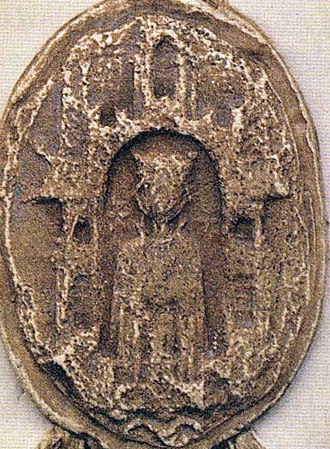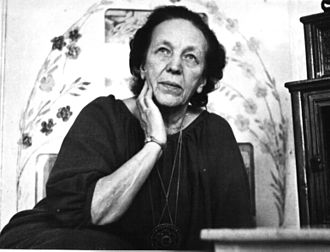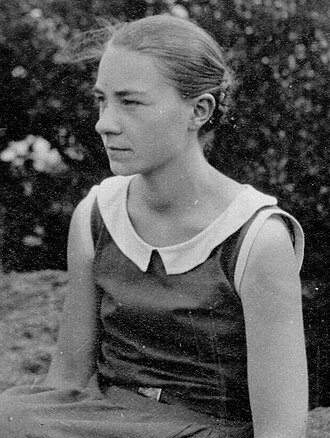Discover Your Roots
SIGN UPDiscover Your Roots
SIGN UPIngeborg is a female name of German origin, meaning "Ing's Protection." It is derived from the Old Norse Ingiborg, combining the theonym Ing with the element borg, which translates to "stronghold" or "protection." This Germanic feminine given name is predominantly used in Germany, Denmark, Sweden, and Norway. Ingeborg has historical significance and has been borne by several notable individuals throughout history, including royalty, nobility, and influential figures. The name has also been associated with legendary characters in Norse mythology, adding to its cultural and mythological significance. In contemporary times, Ingeborg continues to be a cherished name with a rich and enduring legacy, reflecting strength and protection.

Ingeborg Eriksdotter (after 1214 – 17 June 1254) was a Swedish princess, known for her royal lineage, marriage to Birger Jarl, and her influential role in Swedish history. Born as the eldest daughter of King Erik Knutsson and Rikissa of Denmark, she lived in exile in Denmark during her youth. Ingeborg married Birger Magnusson and bore several children, including Valdemar and Magnus Ladulås, who both became Kings of Sweden. Her brother's death led to her son Valdemar's ascension to the throne, with Birger Jarl serving as regent. Ingeborg also inherited her brother's private property. Despite her age, she continued to give birth to children and tragically passed away, possibly due to childbirth complications. Her surviving children, including Rikissa, Valdemar, Magnus Ladulås, Catherine, Erik, Ingeborg, and Bengt, made significant contributions to European history. Ingeborg's legacy is commemorated in historical records and literature, reflecting her enduring impact on Swedish royalty.

Ingeborg Weber-Kellermann (26 June 1918 – 12 June 1993) was a renowned German folklorist, anthropologist, and ethnologist. She made significant contributions to the study of ethnography and rural life in the 19th century, shedding light on the lives of dependent workers on farms and the labor of children during that era. Weber-Kellermann's extensive research and field trips to various regions, including German settlements in Slavonia, Hungary, Banat, Transylvania, and Turkey, provided valuable insights into the relationships between different ethnic groups.Throughout her distinguished career, she held academic positions at esteemed institutions such as the German Academy of Sciences in Berlin and the University of Marburg. Notably, her seminal work "Buch der Weihnachtslieder" (Book of Christmas carols) stands as a comprehensive collection of 151 German Christmas carols, presented within a cultural-historical context. Additionally, her book "Landleben im 19. Jahrhundert" (Rural life in the 19th century) offered an authentic portrayal of the lives of rural inhabitants, dispelling romanticized notions about country life versus industrial production.Weber-Kellermann's legacy lives on through her extensive publications, including works on German folklore, family history, social customs, and children's culture, which continue to be valued by scholars and enthusiasts alike. Her profound impact on the field of ethnology and her dedication to preserving cultural heritage

Ingeborg Refling Hagen (19 December 1895 – 30 October 1989) was a significant cultural figure in Norway during much of the 20th century. Born in Tangen, Hedmark, Norway, she overcame a challenging childhood, where she had to leave school early to work and support her family. Despite limited formal education, Hagen's rich folk tradition and strong religious upbringing shaped her worldview. She worked as a nanny in England, where she first studied Shakespeare and developed strong socialist sympathies. Hagen's literary career began in the 1920s, and her novels often reflected her native environment in Hedmark, incorporating local dialects and inspiring future writers. She gained recognition for her poetic work, especially her Immigrant poems, expressing the longing for home.Hagen actively opposed fascism, which led to her arrest during the occupation of Norway by Nazi Germany. After her release, she dedicated herself to cultural work for children, establishing the regional theater Suttungteatret in 1948, where she served as the artistic director. She was a self-taught philosopher, with a clear feminist statement rooted in her interpretation of the Bible and her respect for old oral traditions. Hagen's legacy lives on through her literary contributions, cultural endeavors, and philosophical insights, making her an important figure in Norwegian history.

Martha Mechthild Ingeborg Seynsche (21 October 1905 – 27 June 1994) was a renowned German mathematician. She made history as one of the first women to earn a doctorate in mathematics from the University of Göttingen. Seynsche's academic journey began with her studies in Marburg and Göttingen, culminating in her successful completion of the state examination for teachers in mathematics and physics. In 1930, she received her doctorate with a dissertation on the theory of almost periodic sequences of numbers, mentored by mathematicians Richard Courant, Harald Bohr, and Alwin Walther. Throughout her career, Seynsche contributed significantly to diverse mathematical areas, including function tables calculation and two-sided surface ornaments. Notably, she also solved the queen problem for arbitrary n. In her personal life, Seynsche married physicist Friedrich Hund and raised six children. Her legacy lives on through her descendants, including her granddaughters, chess grandmaster Barbara Hund, and chess player Isabel Hund. Ingeborg Seynsche's remarkable contributions to mathematics endure, and she rests in peace at the Munich Waldfriedhof alongside her family.

Anna Ingeborg Caroline Tolderlund née Møller (1848–1935) was a prominent Danish women's rights activist and suffragist. She was known for her dedication to women's emancipation, particularly in the north of Jutland, where she established and chaired a local chapter of the Danish Women's Society. Born in Nykøbing Falster, she grew up in a culturally and politically influential environment in Copenhagen. Despite personal tragedies, including the early deaths of both her husbands, she channeled her energy into cultural and political activities, organizing concerts and meetings in her home. Tolderlund also played a significant role in Thisted's music association, serving as its head for almost two decades. Her commitment to the women's movement was evident in her efforts to prioritize women's voting rights and eligibility, and she actively participated in the Conservative electoral association. Tolderlund's legacy lives on through her impactful contributions to women's rights and her lasting support for Thisted's cultural and musical scene. She passed away in Thisted in 1935, leaving behind a remarkable legacy in the pursuit of gender equality.
All images displayed on this page are sourced from Wikipedia or Wikimedia Commons.We use these images under their respective Creative Commons or public domain licenses. Wherever applicable, author attributions and license information are provided. If you believe an image is used incorrectly or outside its license terms, please contact us so that we can review and correct the issue.